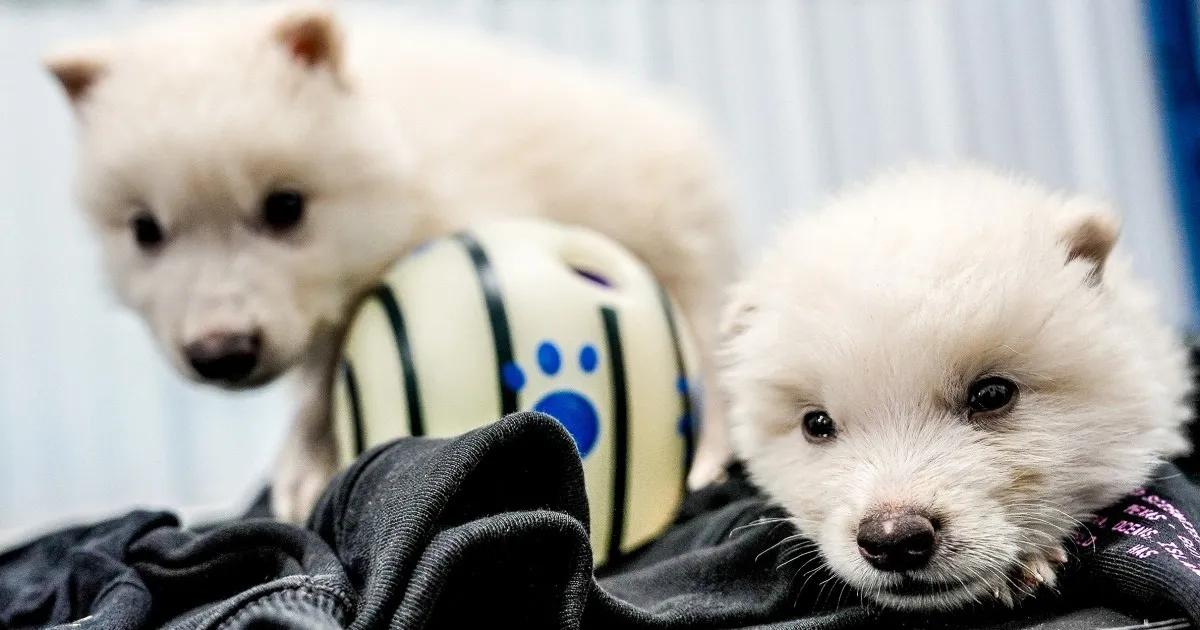
In an exciting development for conservation and genetic research, three genetically engineered wolves that closely resemble the extinct dire wolves are currently residing in a secure, undisclosed location in the U.S. This initiative is part of a broader effort by Colossal Biosciences, a company dedicated to the ambitious goal of reviving lost species. The wolf pups, aged between three to six months, exhibit striking physical characteristics, including long white fur and robust muscular jaws. Currently, they weigh approximately 80 pounds, and researchers anticipate that they will reach around 140 pounds at maturity, as reported by Colossal Biosciences on a recent Monday.
Dire wolves, which roamed North America over 10,000 years ago, were significantly larger than today’s gray wolves, which are their closest living relatives. While this groundbreaking research marks a step forward in genetic engineering, independent scientists emphasize that the full revival of dire wolves is still a distant reality. Vincent Lynch, a biologist at the University at Buffalo who was not involved in the research, noted, “All you can do now is make something look superficially like something else,” highlighting the challenges faced in fully restoring extinct species.
Colossal scientists utilized ancient DNA from dire wolf fossils to uncover specific traits that these majestic animals possessed. Notably, they studied a 13,000-year-old dire wolf tooth found in Ohio and a 72,000-year-old skull fragment from Idaho, both preserved in natural history museum collections. By extracting blood cells from a living gray wolf, researchers employed the CRISPR technology to genetically modify these cells at 20 different sites. This modified genetic material was then transferred to an egg cell from a domestic dog, culminating in the birth of genetically engineered pups just 62 days later.
Although these pups share physical traits with young dire wolves, they may lack essential survival skills. According to Matt James, Colossal’s chief animal care expert, these engineered wolves will “probably never learn the finishing move of how to kill a giant elk or a big deer” since they will not have opportunities to observe and learn from wild dire wolf parents. This limitation raises questions about the true viability of reviving an extinct species.
In a parallel effort, Colossal also announced the successful cloning of four red wolves using blood drawn from the critically endangered red wolf population in the southeastern U.S. This initiative aims to increase genetic diversity within the small captive population, which is crucial for the survival of the species. Wildlife expert Christopher Preston from the University of Montana, who was not involved in this research, noted that this cloning technology could offer broader applications for the conservation of other species, as it is less invasive than traditional cloning methods. However, he also acknowledged the challenges, as sedating a wild wolf for a blood draw is no simple task.
Colossal CEO Ben Lamm has engaged with officials from the U.S. Interior Department about these groundbreaking projects. Interior Secretary Doug Burgum has praised these efforts, calling it a “thrilling new era of scientific wonder.” Despite the excitement surrounding these developments, external scientists caution against overestimating the potential for restoring extinct species. Vincent Lynch reiterated that “whatever ecological function the dire wolf performed before it went extinct, it can’t perform those functions” in today’s altered landscapes.
As the journey into genetic engineering continues, the implications for conservation, species revival, and ecological balance remain subjects of intense discussion and research.